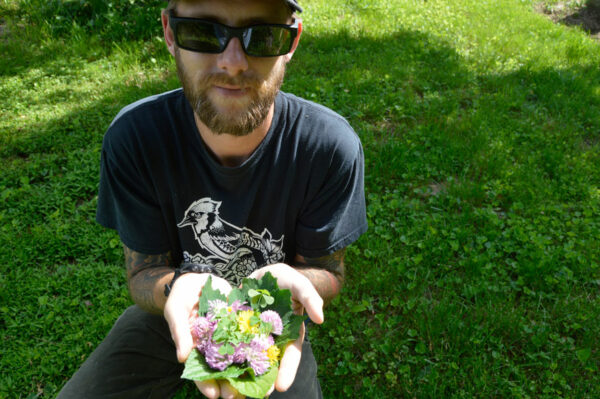[ngg_images gallery_ids=”433″ display_type=”ds-nextgen_royalslider”]
It may come as a surprise, but in many backyards free, local, nutritious food is growing!
Many plants that people consider weeds are edible, and with a little bit of knowledge, those weeds can become delicious sustenance. For instance, Autumn Olive is an invasive shrub that has become very common in Northern Virginia. But did you know that in the fall it produces loads of edible berries that can be used to make jams and fruit leather?
Or consider the dandelion. Not many people realize it, but every part of the plant is edible. You can add the flowers and leaves to your salads, and the roots can be processed into a coffee-like drink.
Of course, before you start pulling up weeds and eating them, it’s important to know what you’re doing. It is essential to identify plants correctly, harvest them safely and ethically, and prepare them properly. There are many plant identification books on the market; however, the best way to learn about wild edibles is from an experienced forager.
In the coming weeks, Earth Village Education, a nonprofit nature education center located near Marshall, Virginia, will conduct two classes about wild edible plants.
The first class on Saturday, June 20, will be a great introduction to the subject. Students will learn plant identification and safety principles, then go for a plant walk, visiting fields, forests, and wetlands to find and harvest a variety of plants that are in season.
The second class from Saturday, July 11 through Sunday, July 12, will cover the same basics in greater depth, and will also feature information about the medicinal uses of wild plants. No prior experience is necessary for either class, and the fee for each class is on a sliding scale.
For more information and to register, visit EarthVillageEducation.org, and transform a stroll in your backyard into a foraging adventure!



